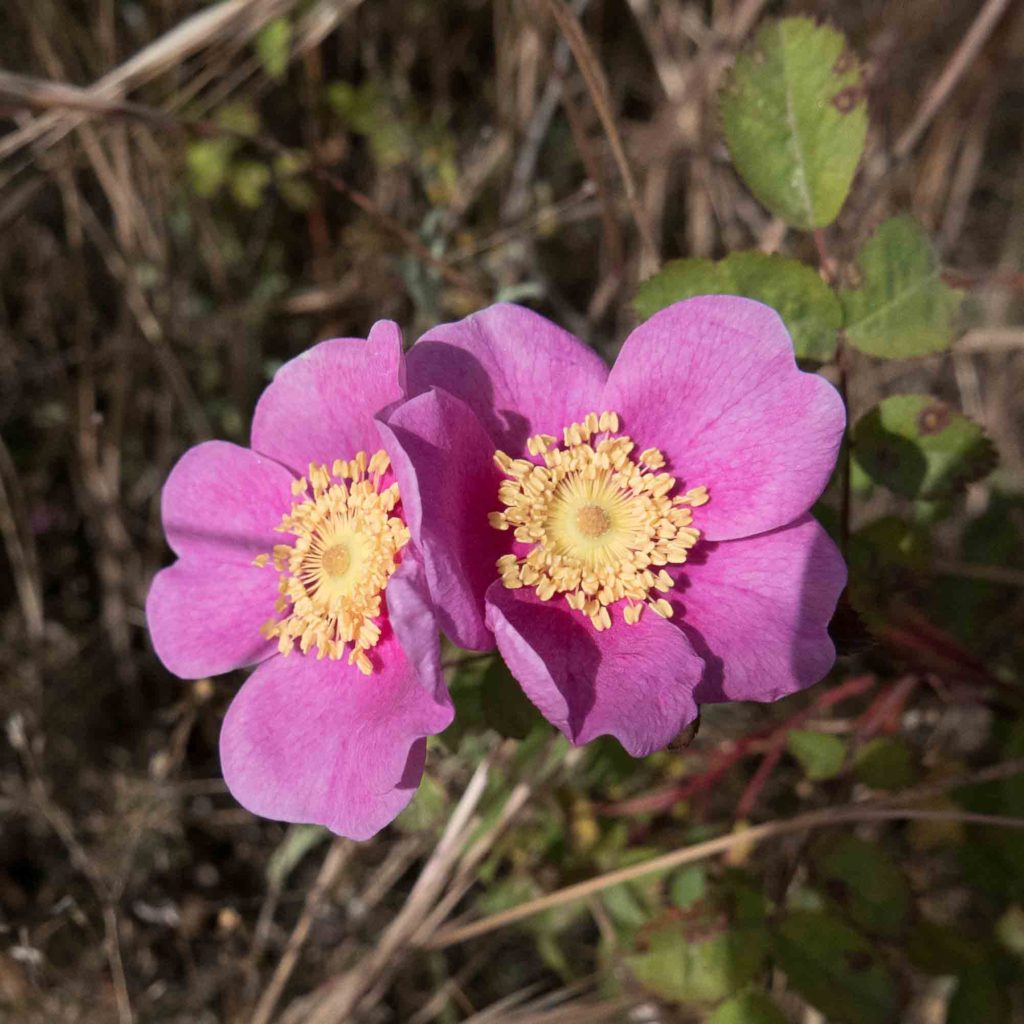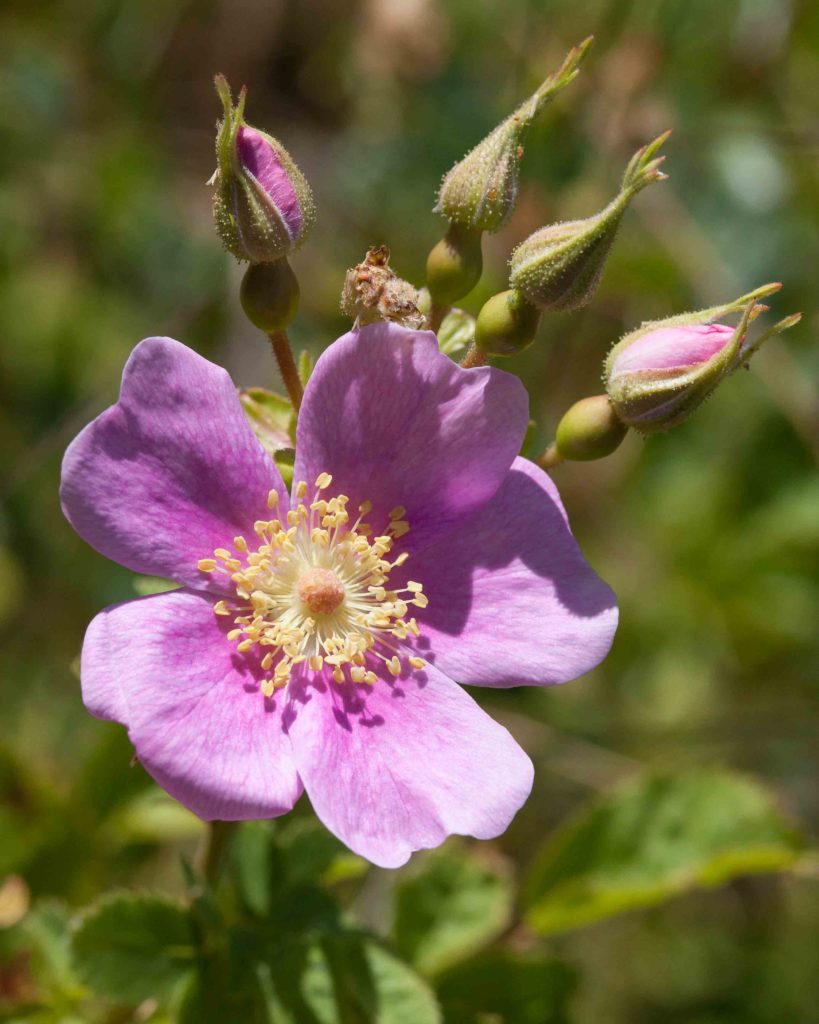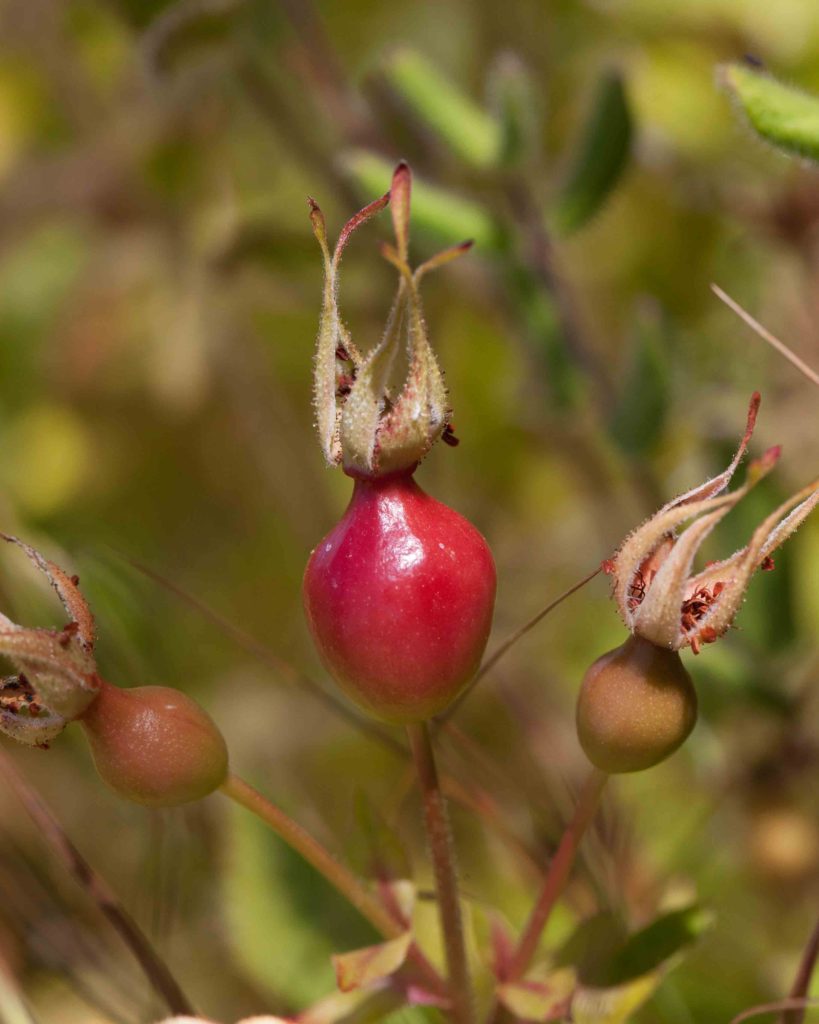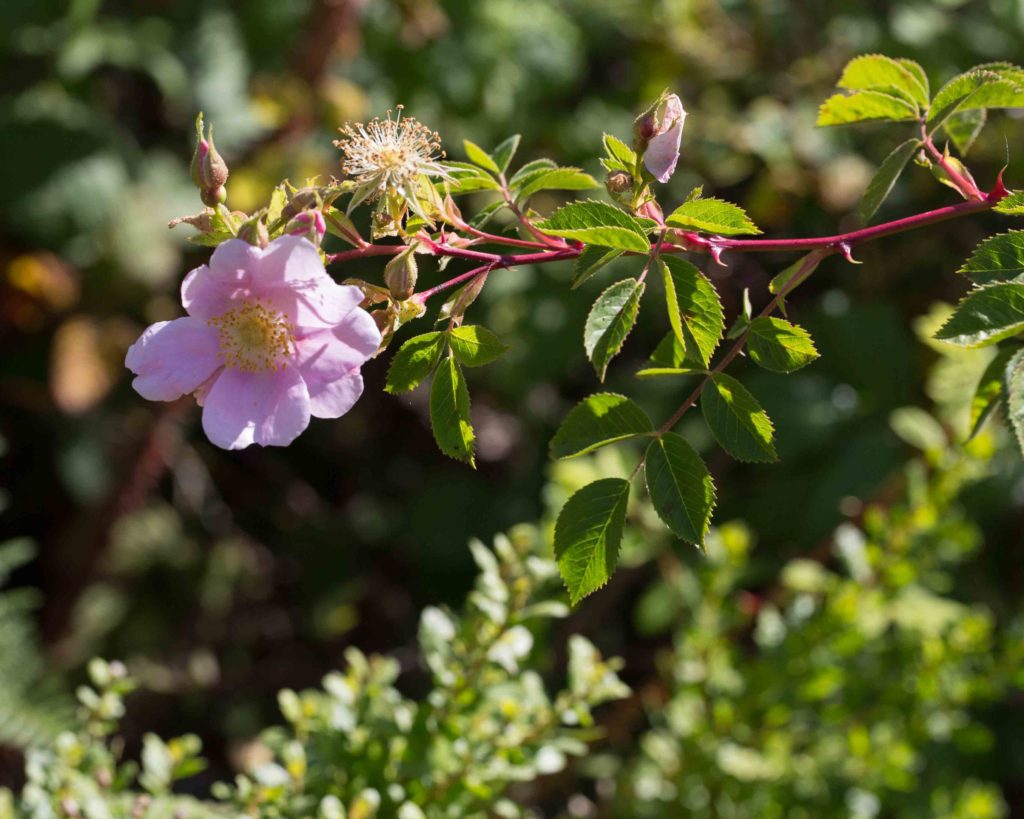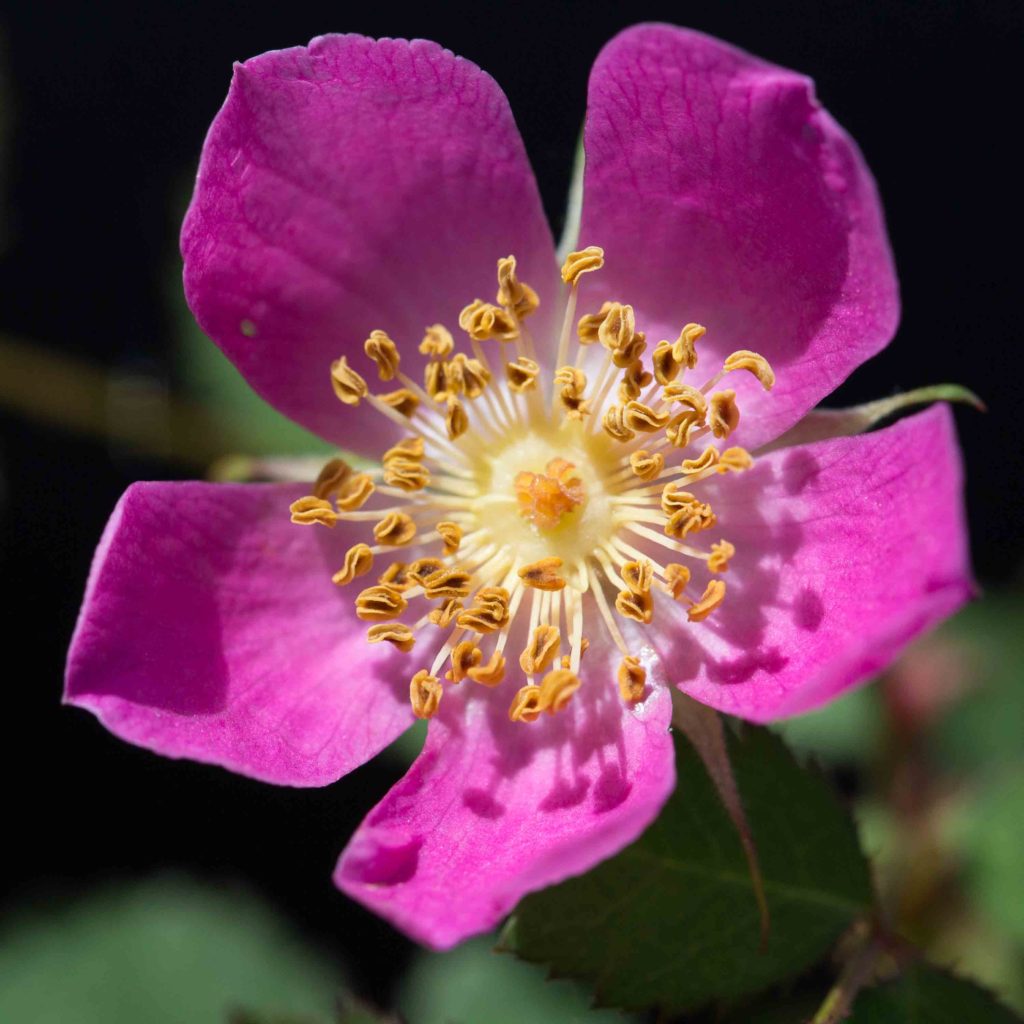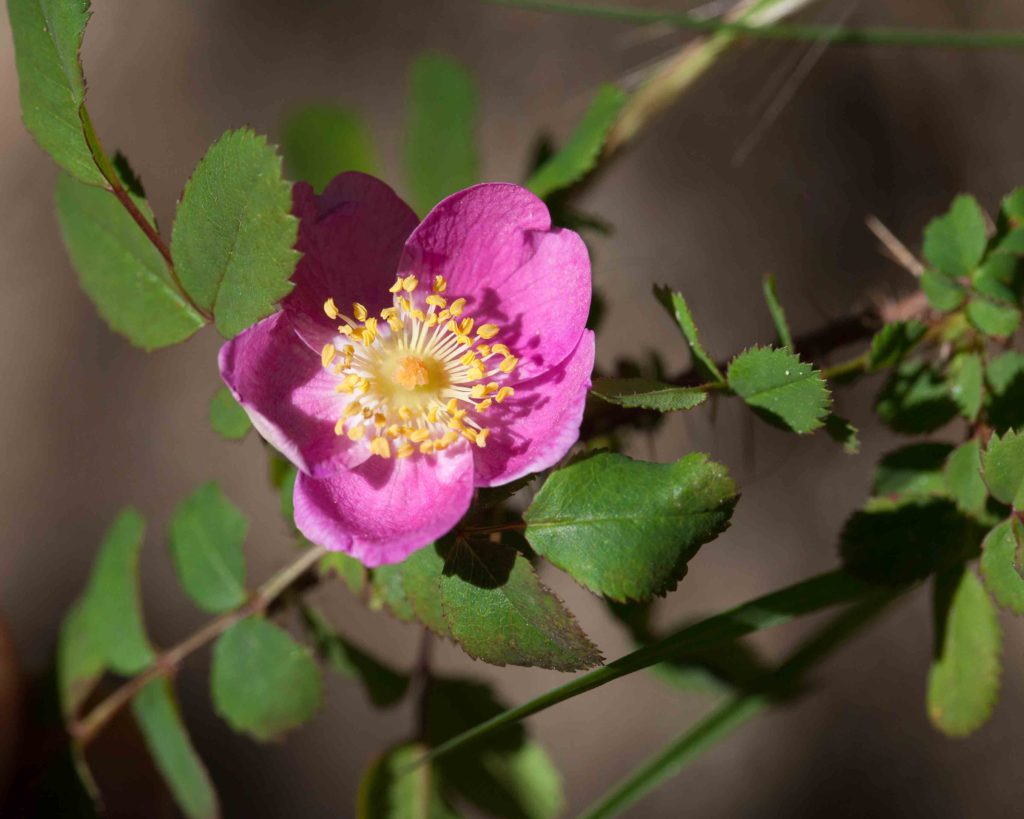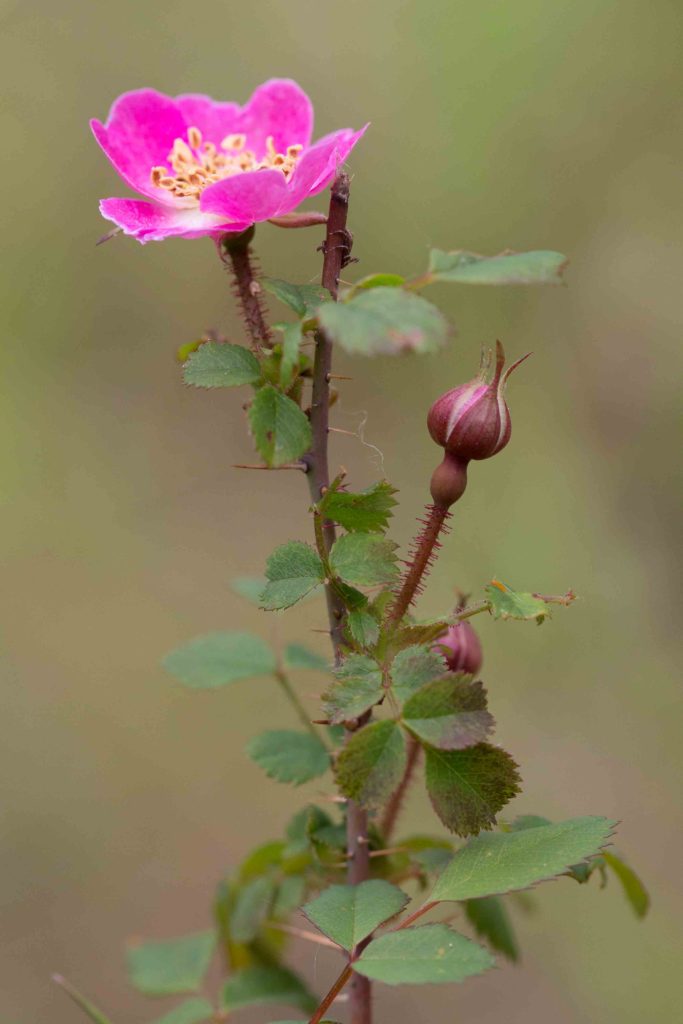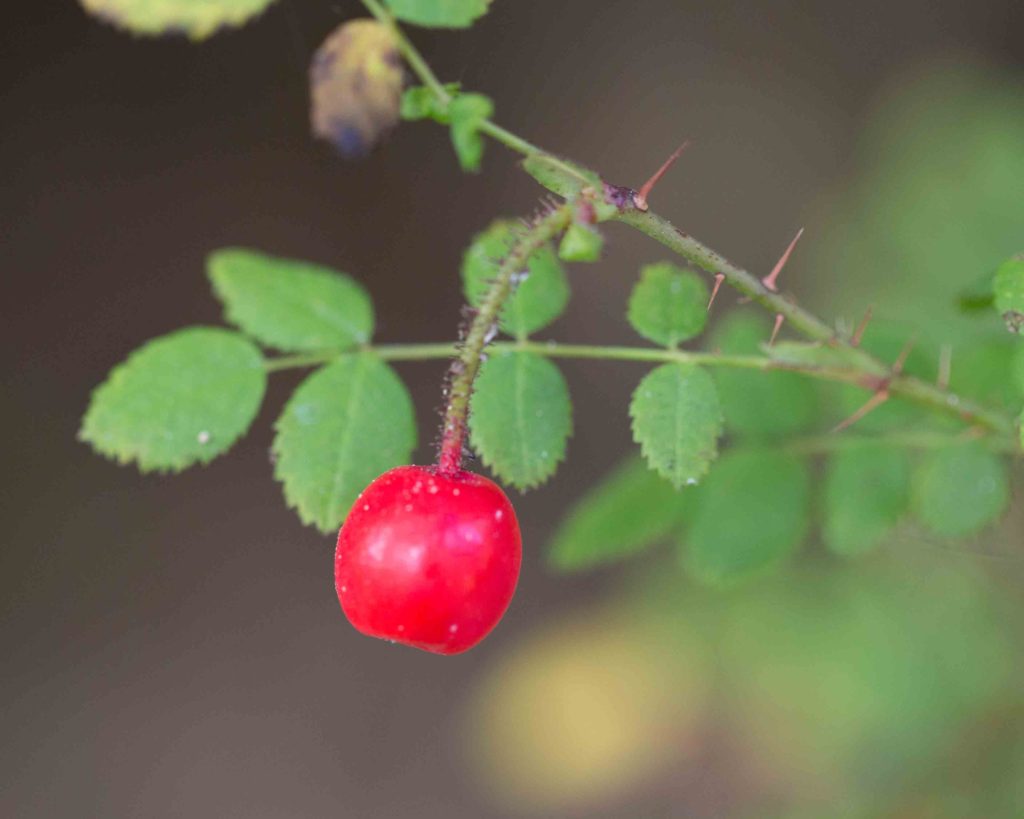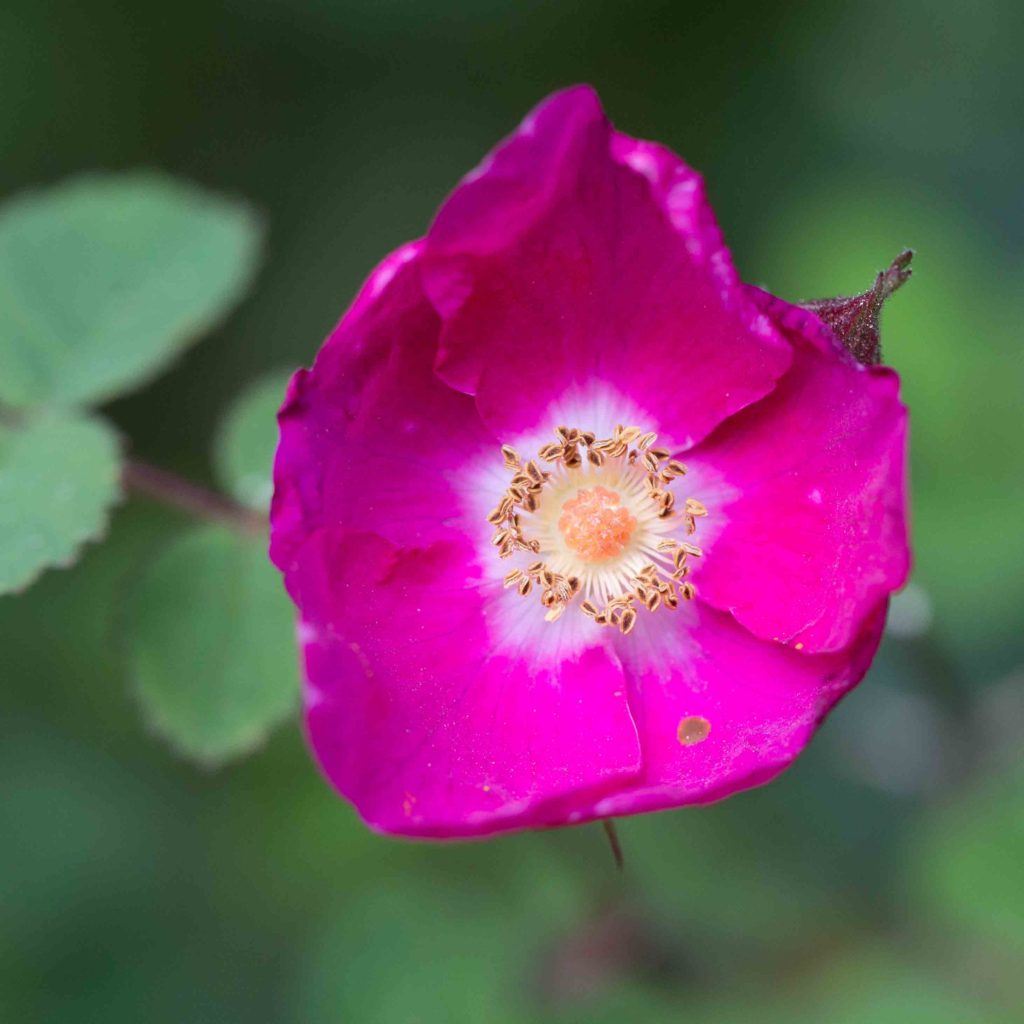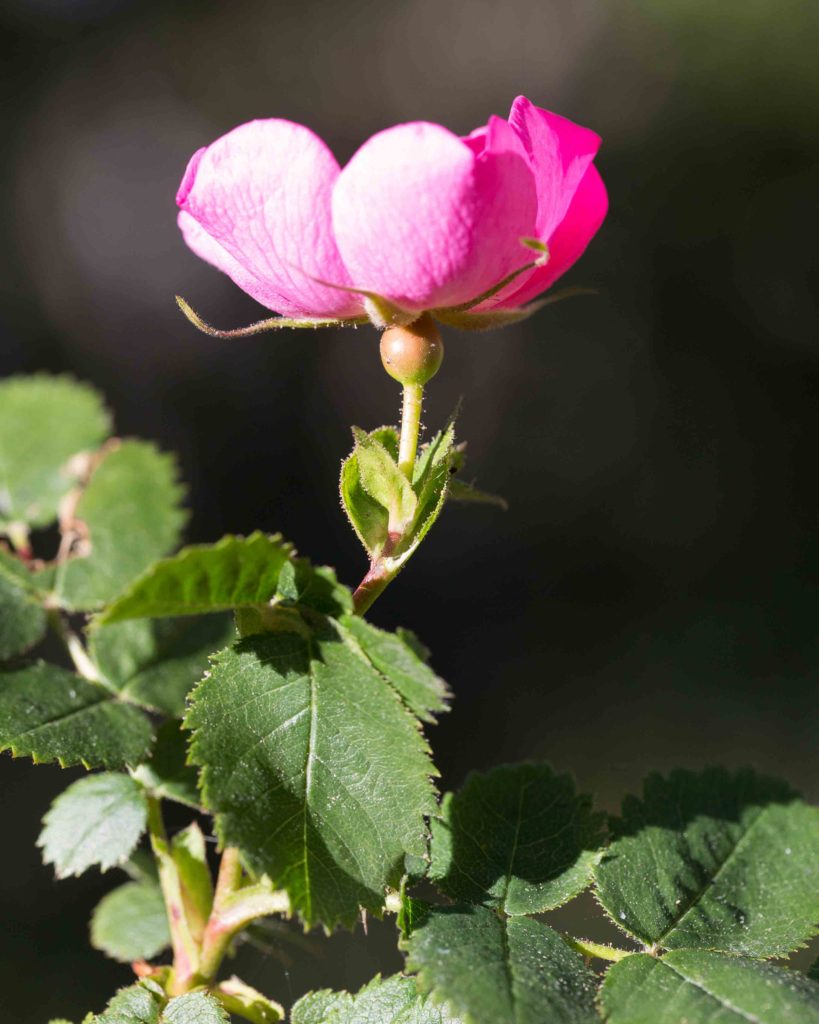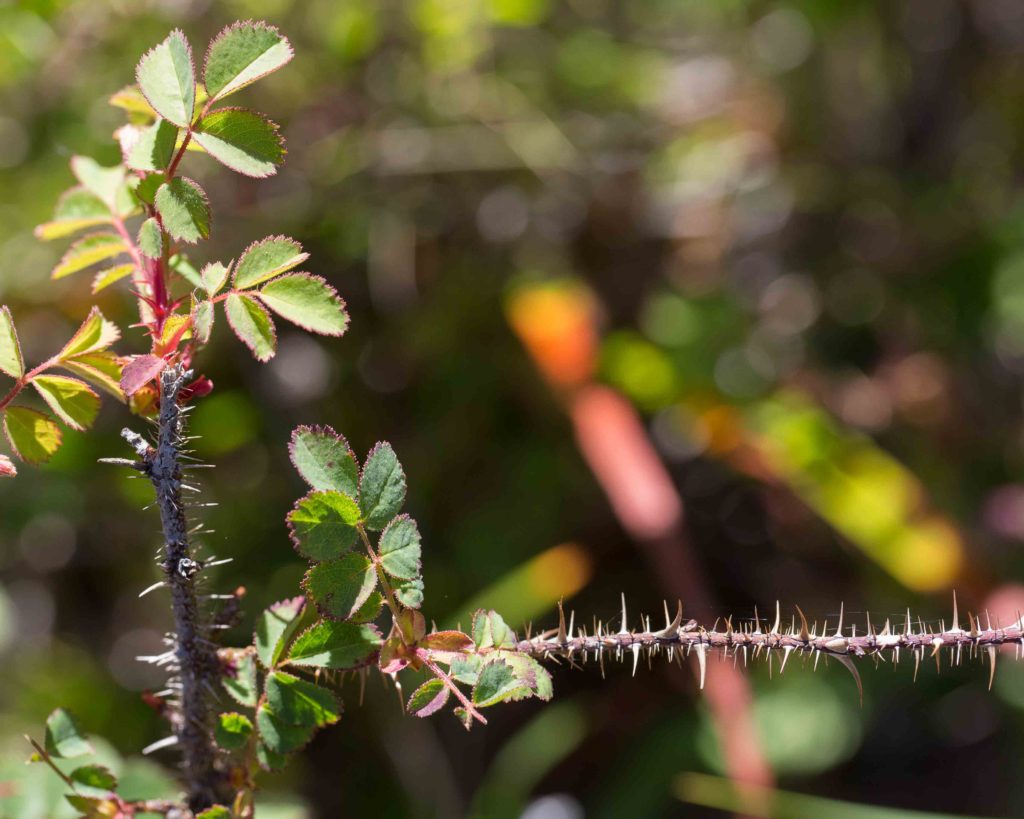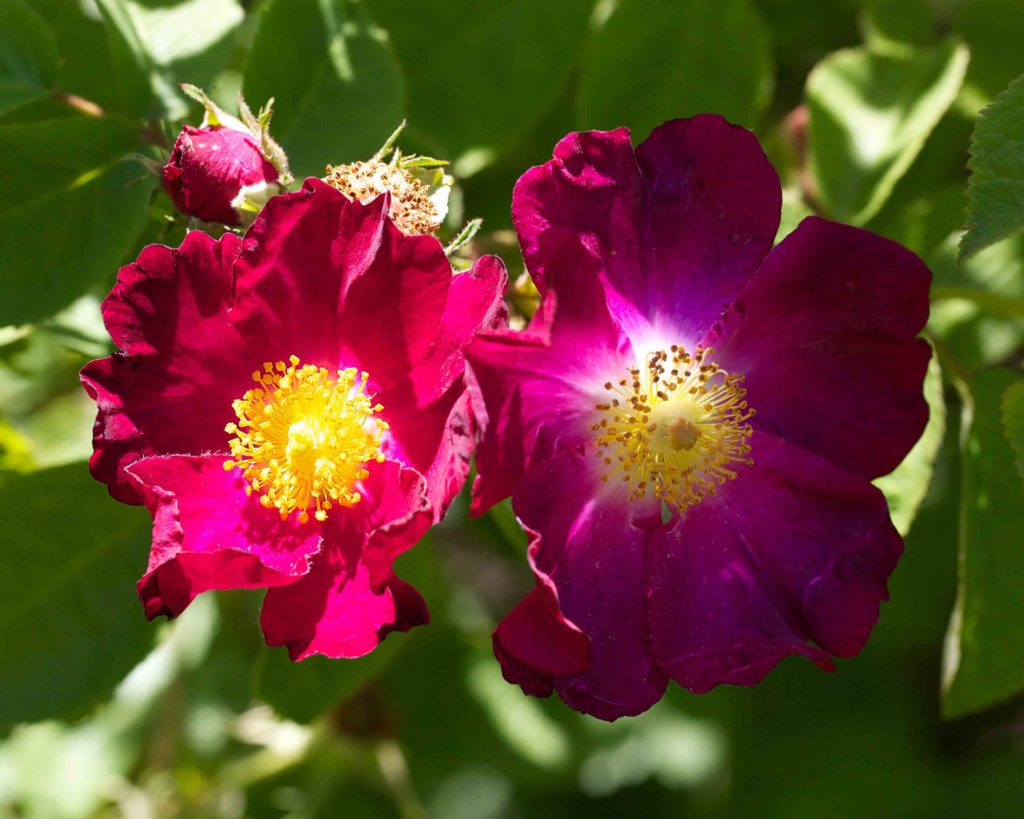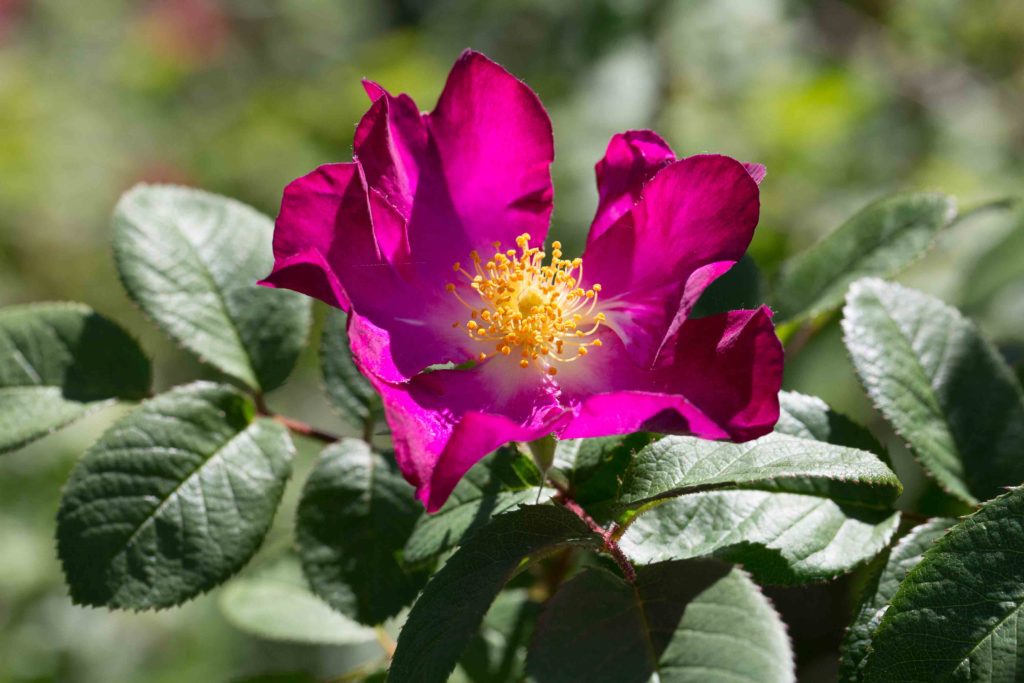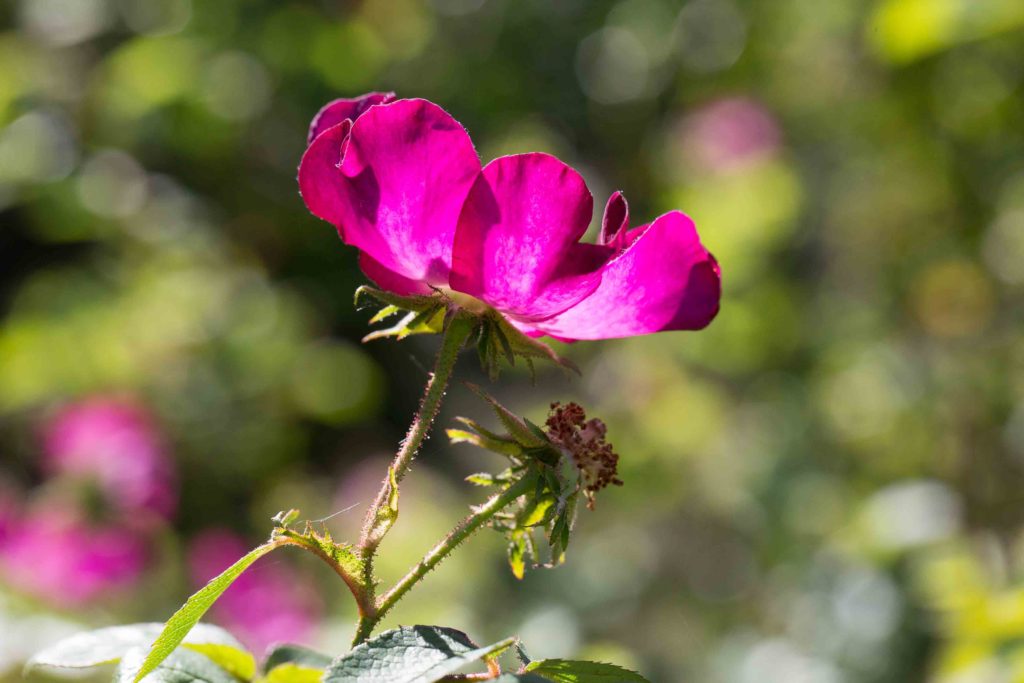Rosaceae: Rose Family — Roses
Plants in the Rose family include many of our best-loved ornamentals and fruits. The flowers usually have 5 petals, 5 sepals and numerous stamens, attached to a saucer- or bowl-shaped hypanthium. Often the oval leaves are toothed, and there is a stipule at the petiole base.
California Wild Rose – Rosa californica
Blooms:
Feb–Nov
Plant Height:
0.8–2.5 m
Flower Size:
Large
Origin:
Native
Habitat:
Generally moist places, especially streambanks
Notes:
Happily, this beautiful flower is very common. In addition to the moist places it favors, it is sometimes found in open dry places. The flowers are larger and paler than the other native roses, and its leaves are also larger, pinnate with 5–7 toothed leaflets. It is most easily distinguished by its stout, recurved prickles, and by the fact that the sepals are persistent, i.e. they remain attached to the hip. The flowers have 20–40 pistils.
Wood Rose – Rosa gymnocarpa var. gymnocarpa
Blooms:
Apr–July
Plant Height:
0.5–2 m
Flower Size:
Medium
Origin:
Native
Habitat:
Shaded woodland
Notes:
This is less common than California Rose (Rosa californica, see above), and it has smaller flowers (petals 8–12 mm long). They are usually deep pink to red, with 5–10 pistils. Leaflets (up to 9 in number) are also smaller. It has numerous prickles, which are slender and straight. Its sepals are deciduous, i.e. they fall from the hip as it matures. The hypanthium is only 1.5–2 mm wide at the base of the petals.
Pine Rose – Rosa pinetorum
Blooms:
May–June
Plant Height:
0.5–1 m
Flower Size:
Medium
Origin:
Native
Rare or endangered?
Yes – 1b.2
Habitat:
Shaded pine and redwood woodland
Notes:
This is a small, rare rose. Like Wood Rose (Rosa gymnocarpa, see above), it has smaller flowers than California Rose (Rosa californica, also above), and prickles that are straight and slender. The flowers are a little larger than Wood Rose (petals 15–20 mm long), usually pink to red, and with more numerous (10–20) pistils. The hypanthium is also broader, 4 mm wide at the base of the petals. Leaflets are generally nor more than 7 in number. Its sepals are persistent, i.e. they remain on the hip as it matures. This is a problematic species, pure (non-hybrid) forms are uncommon.
Sweet-brier – Rosa rubiginosa
Blooms:
May–Aug
Plant Height:
0.8–3 m
Flower Size:
Large
Origin:
Europe
Habitat:
Escape from cultivation
Notes:
This forms a large shrub or thicket with large, rich pinkish-red petals (10–20 mm long). The flowers have 20–45 pistils. The sepals have toothed lateral lobes, unlike the native roses which all have entire sepals. Both leaves and inflorescence are noticeably glandular. Prickles are few, thick based, curved and compressed from side to side.
